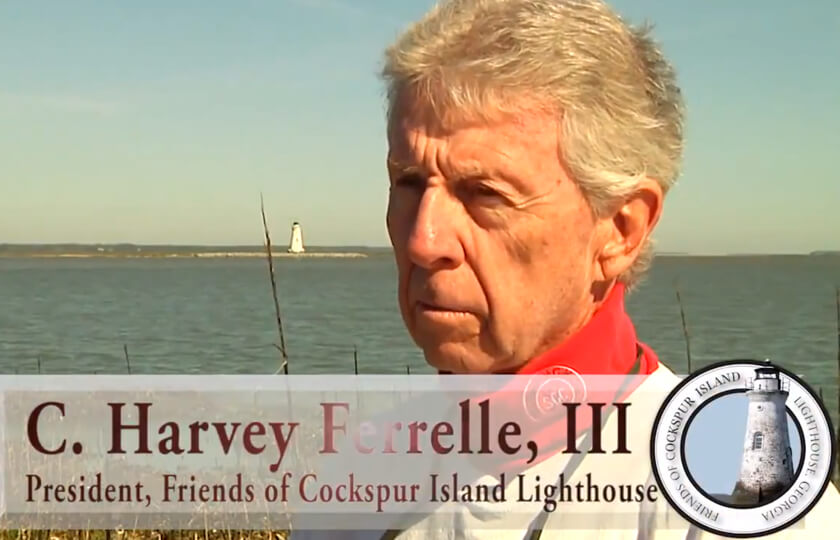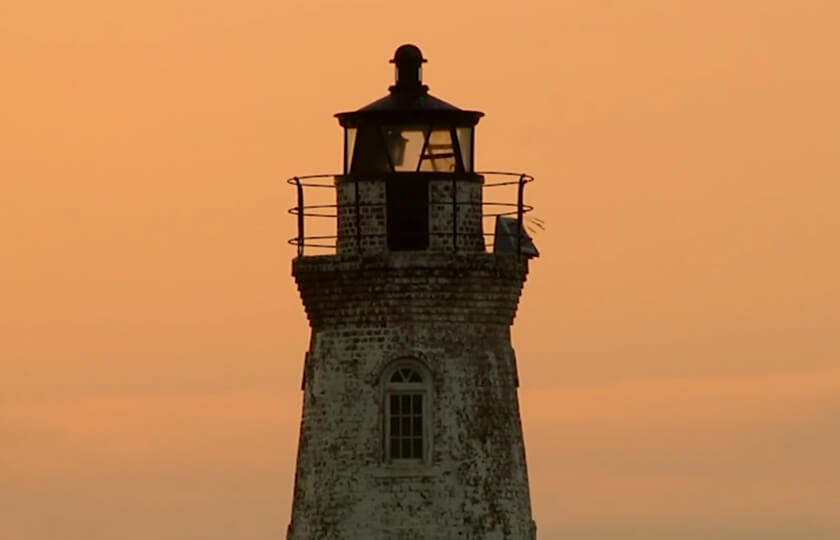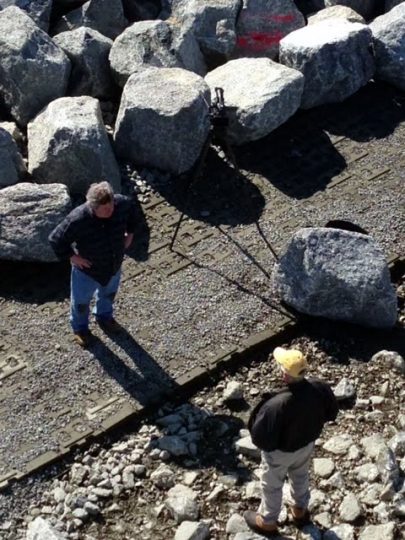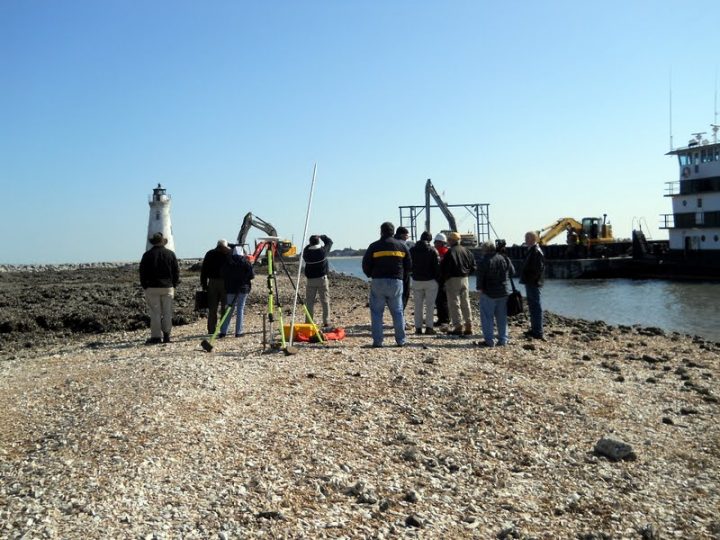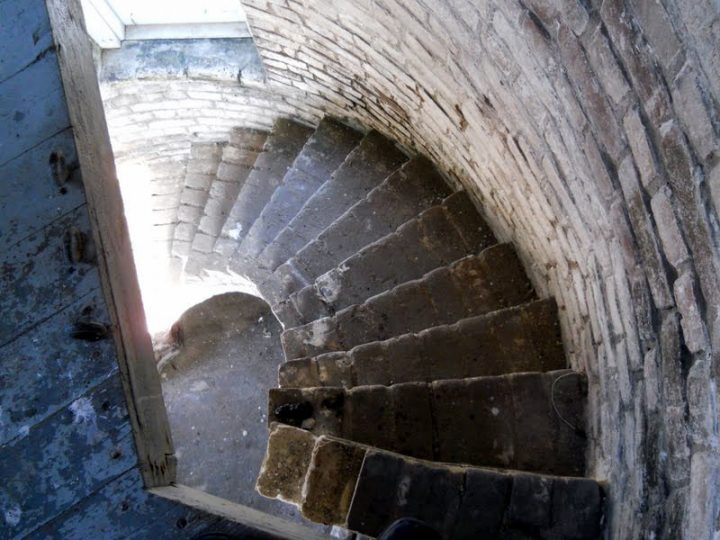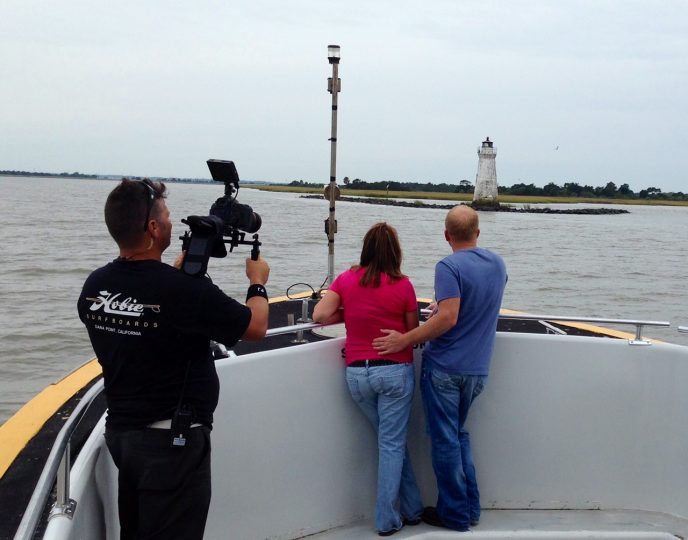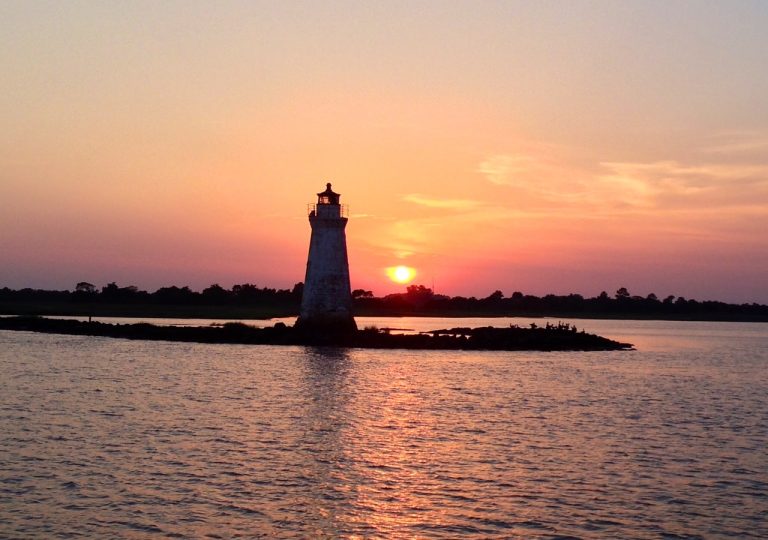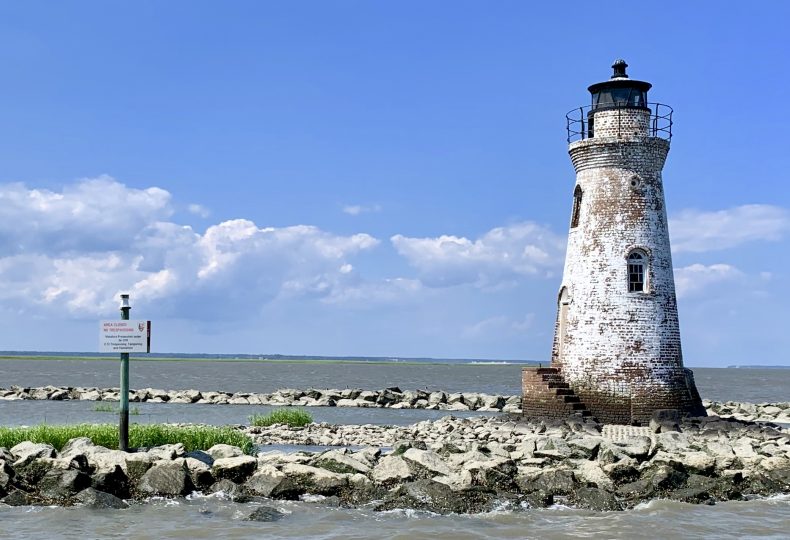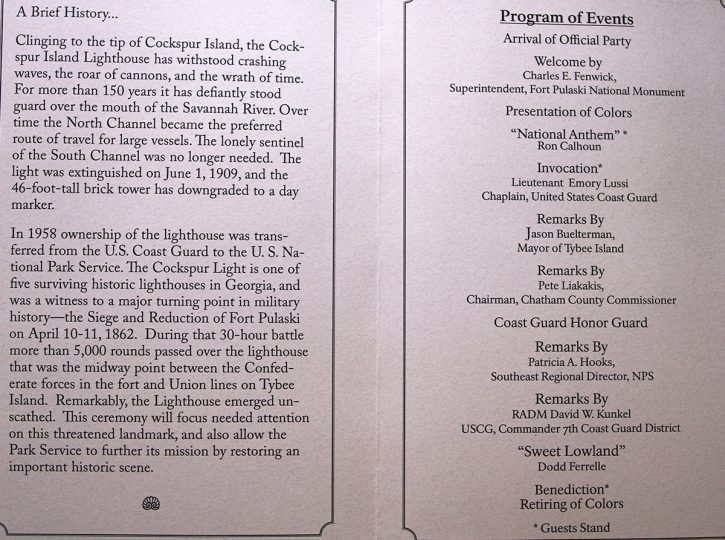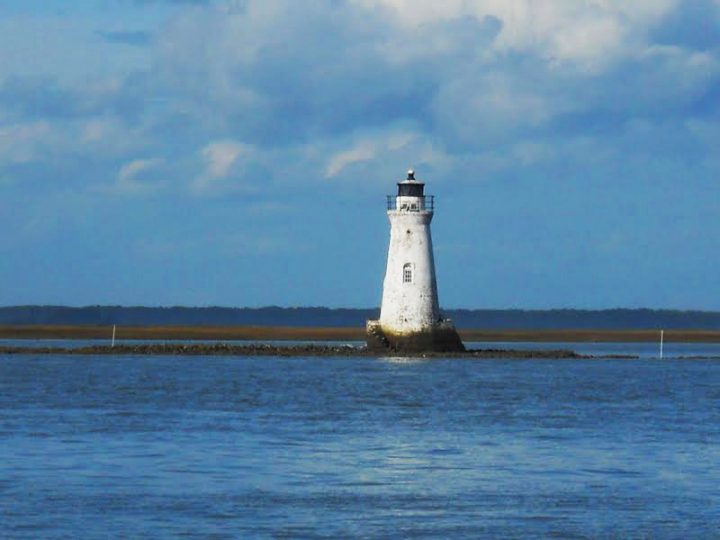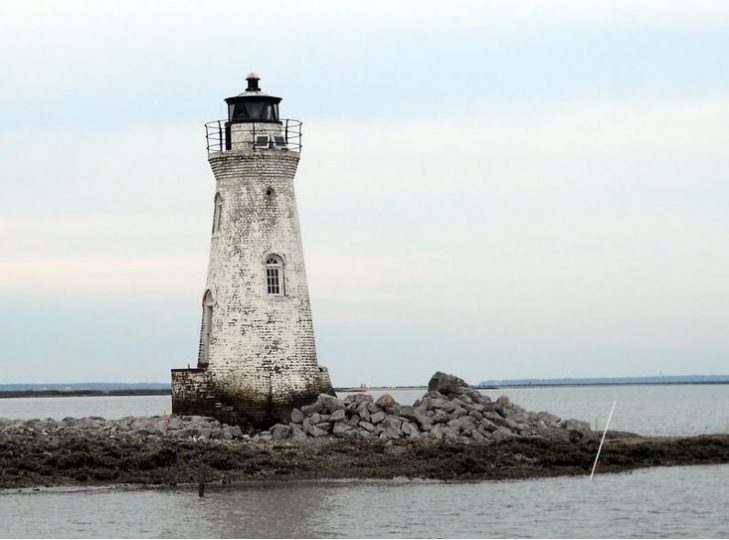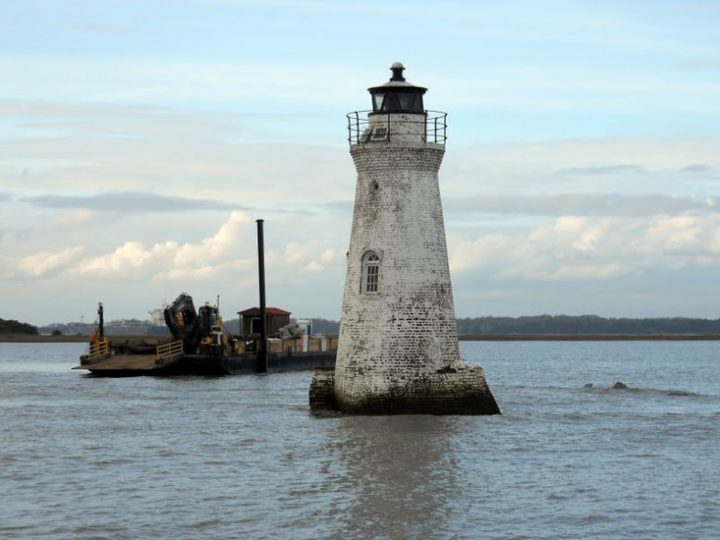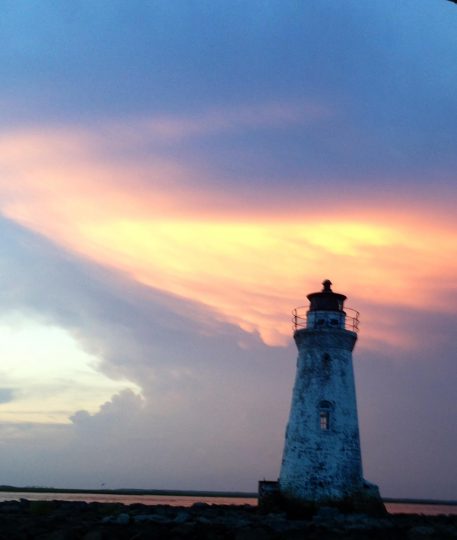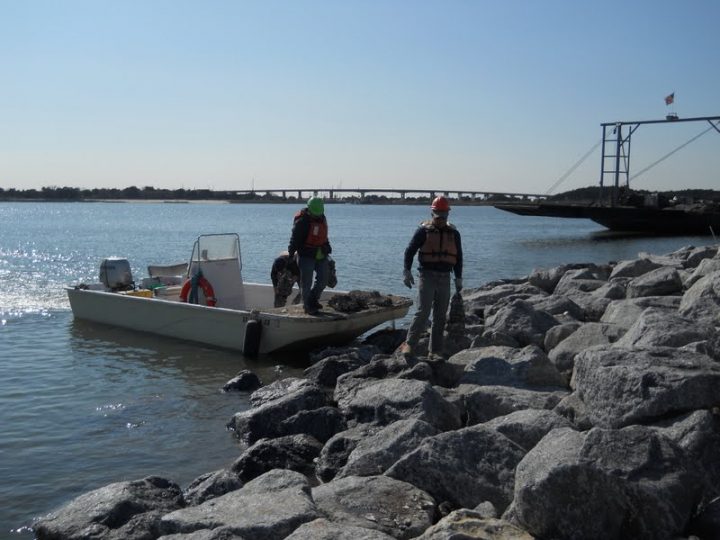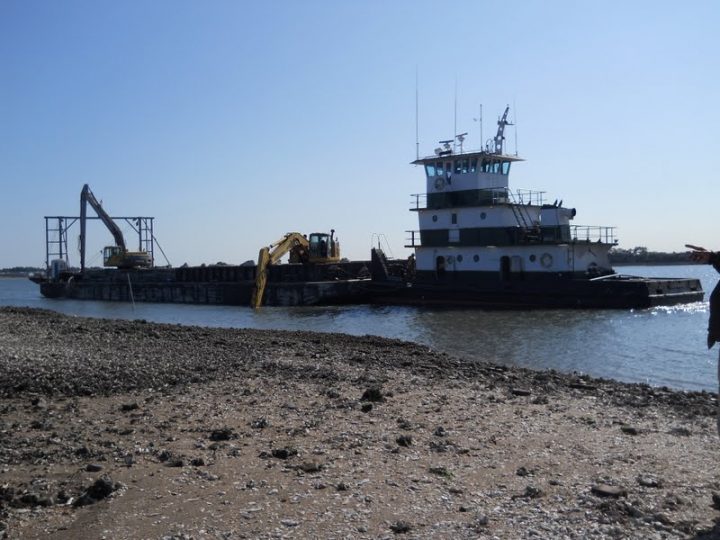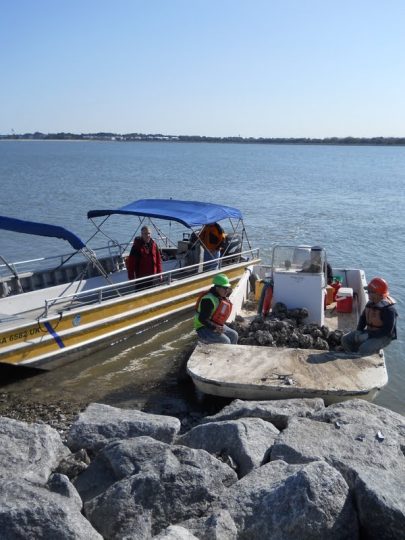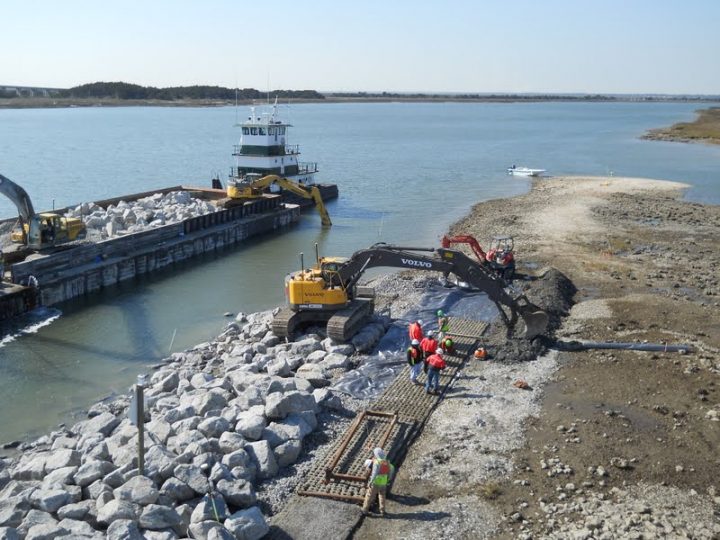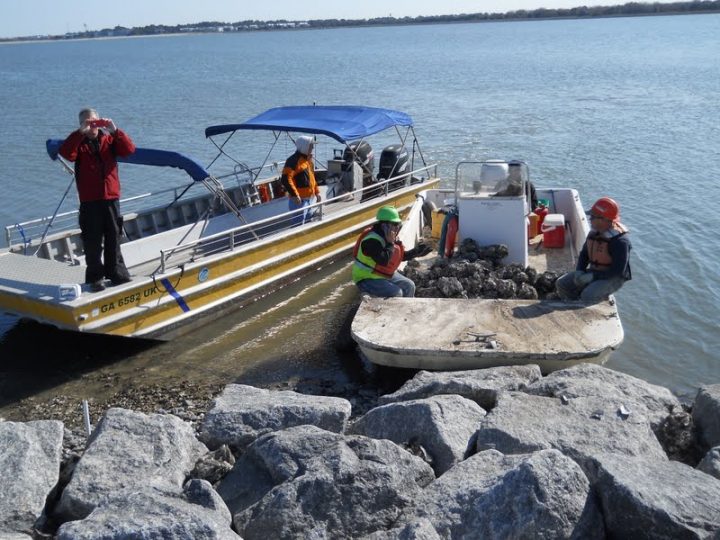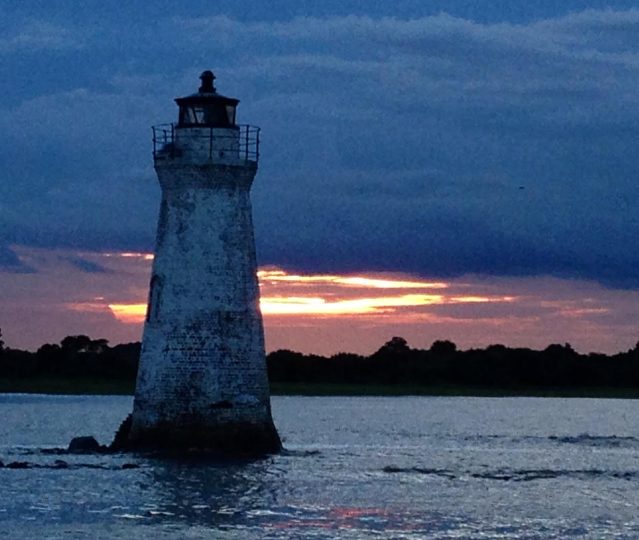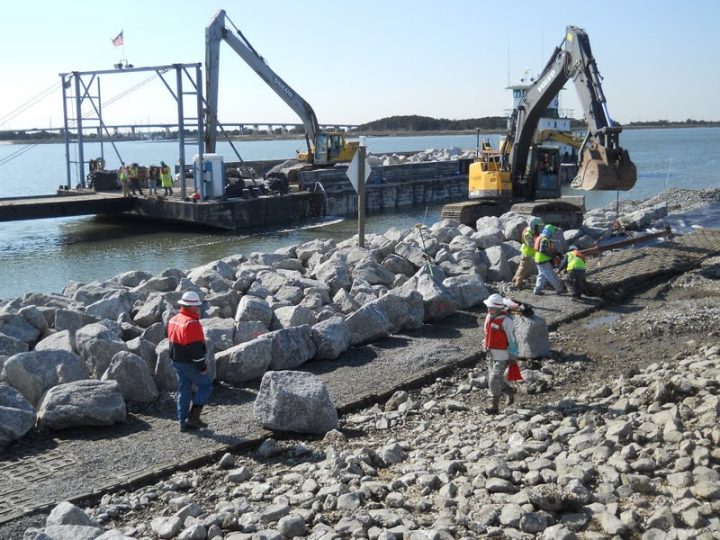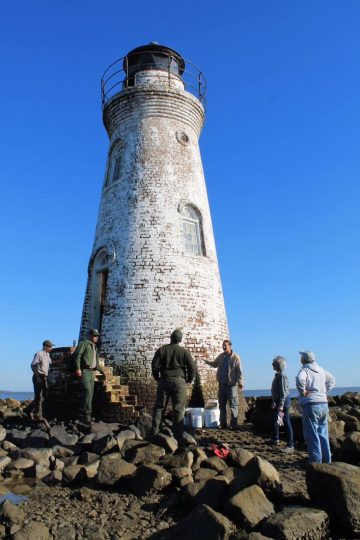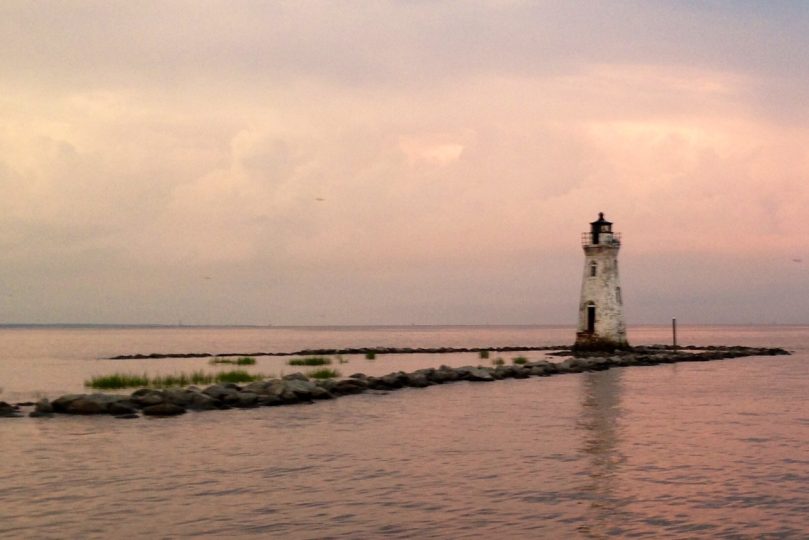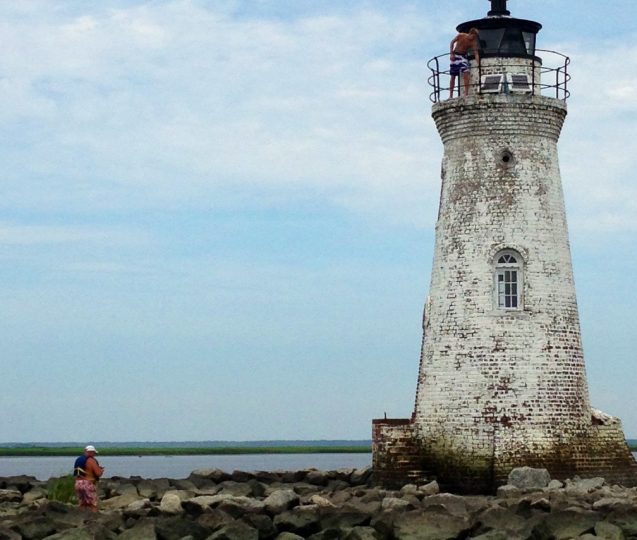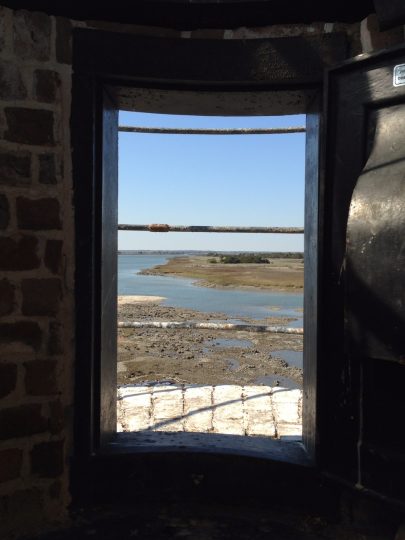
The Historic Cockspur Island Lighthouse
LOCATED IN THE SOUTH CHANNEL OF THE SAVANNAH RIVER BY LAZARETTO CREEK
How To Help
Become a hands-on volunteer—the Friends of Cockspur Lighthouse can use your help!
Send A Donation
The Friends of Cockspur Island relies primarily on the generous support of our donors.
Special Events and News
National Lighthouse Museum features Cockspur Island Lighthouse as “Lighthouse of the Week”
The National Lighthouse Museum has featured the Cockspur Island Lighthouse as “Lighthouse of the Week.” In its March 29 newsletter, the National Lighthouse Museum shared the history of the Cockspur Island Lighthouse, as follows:
“The first Tybee Island Lighthouse was built in 1736 to mark the entrance to the Savannah River, but mariners still had to travel seventeen miles upstream to reach the Port of Savannah. Several islands, including Cockspur, Long, and Elba, lie between the river’s mouth and the port, bisecting the river into two main channels: the North Channel, and the South Channel.
Congress appropriated $3,000 on March 3, 1832 for an unlit beacon on the “White Oyster Beds” near the mouth of the Savannah River, and then sixteen years later, provided another $2,000 for ‘placing a lantern, lamps, and reflectors upon the beacon already erected’ and for a small house for the keeper. Noted New York architect John Norris, who designed the U.S. Customs House and Hugh-Mercer house in Savannah, was hired to “repair, alter, and put lanterns and lights on Cockspur Island…and to erect a suitable keeper’s house.” As a result of this work, two lights, known as Oyster Beds Beacon and Cockspur Island Beacon, were established off Cockspur Island in 1849 to mark the entrance to the south channel of the Savannah River. Each of these beacons displayed a light at a focal plane of twenty-five feet using three lamps and fourteen-inch reflectors. Cockspur Island Lighthouse displayed a fixed white light, and Oyster Beds Lighthouse a fixed red light.
The first keeper of these two lights was the appropriately named John Lightburn, who resided on Cockspur Island, near Fort Pulaski, and would make daily trips to the towers to service the lights. James Callan was serving as keeper in 1850, when an inspector noted that the lamps often burned longer than was necessary since it was dangerous to access the towers at high tide. Cornelius Maher, the third keeper of the lights, drowned in 1853 when his boat capsized in the river. Maher’s wife, Mary, replaced her husband as keeper and remained at the lights for three more years.”
If you would like to help the Friends of Cockspur Island Lighthouse’s efforts to preserve this historic lighthouse, please go to the DONATE button on this website. The Friends of Cockspur Island Lighthouse is a non-profit, 501 (c) 3 organization. Thank you for your support!
MORE NEWS
Twenty-two Family Friendly Restaurants on Tybee Island have Cockspur Island Lighthouse placemats for kids to color and learn more about the lighthouse
The Friends of Cockspur Island Lighthouse have distributed special “coloring placements” of the Cockspur Island Lighthouse to 22 family friendly restaurants on Tybee Island. KIds can color on the placemats, play games, and learn about the Cockspur Island LIghthouse and how to save it.
Cockspur Island Lighthouse Live Feed
Help us to protect and preserve the Cockspur Island Lighthouse. We greatly appreciate any donations.
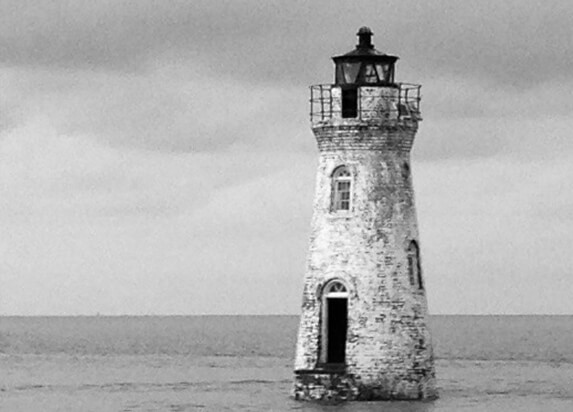
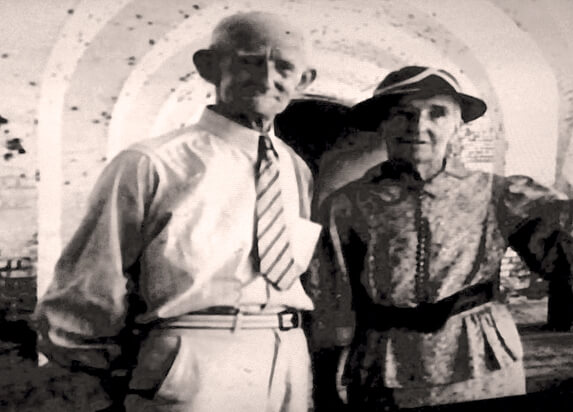
History of The Cockspur Island Lighthouse
Situated on an islet off the southeastern tip of Cockspur Island marking the South Channel of the Savannah River, the Cockspur Lighthouse is stands twelve miles east of the port of Savannah. The islet, often covered by high tide, is comprised of oyster shells, and marsh grass. Documented references suggest the first brick tower, used as a daymark, was built on Cockspur Island between March 1837 and November 1839. In 1848, John Norris, a New York architect, was contracted to supervise construction of an illuminated station. The noted architect designed many of Savannah’s grand structures including the U.S. Custom House in downtown Savannah, the Mercer-Wilder House, and the Green-Meldrim House, where General Sherman stayed during the Civil War.
Norris’s duties were to “repair, alter, and put up lanterns and lights on Cockspur Island…and to erect a suitable keeper’s house.” This first tower had a focal plane 25 feet above sea level. The beacon housed a fixed white light emanating from five lamps with 14-inch reflectors visible for nine miles.
Tragedy struck again in 1854 when the structure was destroyed by a hurricane. The tower was rebuilt and enlarged on the same foundation the next year. At the start of the American Civil War, the light was temporarily extinguished. On April 10, 1862, Union forces in eleven batteries stretching along the beach at Tybee Island, started a long-range bombardment of Fort Pulaski. Thirty-six guns participated in a thirty-hour siege of the fort with the Cockspur Lighthouse in direct line of fire.
Following the surrender of Fort Pulaski on April 11, 1862, the little beacon miraculously only suffered minor damage. Theories abound as to why the tower escaped destruction. One theory suggests to effectively hit the Fort walls approximately 1,500 yards distant, Union artillerists had to fire shots at a high angle, thus passing over the tower. This strategy, coupled with the short duration of battle could explain why the tower was spared. Soon after war’s end, April 25, 1866, the beacon was relit and painted white for use as a daymark.
Throughout its life, hurricanes plagued the Cockspur Light. August 27, 1881, a massive storm struck Cockspur Island causing water to rise 23′ above sea level. The storm surge filled the lighthouse interior and destroyed the Keeper’s residence. Jeremiah Keane, the Assistant Keeper Charles Sisson, and two Fort Pulaski caretakers took refuge inside the Northwest stair tower of the brick fort when the great hurricane of 1893 struck. A two-story cottage originally built atop the Fort Pulaski for an Ordnance Sergeant would be used by the light keeper in 1906.
Man, not nature, extinguished forever the little light. No longer would this light guide vessels up the shallow South Channel of the Savannah River. To accommodate large freighters, the increasingly busy Savannah port routed vessels to the deep, more navigable North Channel. Effective June 1, 1909, the beacon light was snuffed.
As the threat to the beacon by salvage crews and other private interests grew, the National Park Service looked into the acquisition of the light. On August 14, 1958, by presidential proclamation, the Cockspur Lighthouse was transferred from the United States Coast Guard to the National Park Service.
Today, the National Park Service is dedicated to the preservation of the historic Cockspur Island Lighthouse. The lighthouse is currently not open for tours and the goal is to re-open it in the future. However, an overlook trail offers visitors the best chance to get a closer look at the lighthouse today.
From NPS website: http://www.nps.gov/fopu/learn/historyculture/cockspur-light.htm
Roll Call of Past Light Keepers
HEAD LIGHT KEEPERS
- John H. Lightburn (1849)
- James Callan (1850)
- Cornelius Mahr (1851-1853)
- Mary Mahr (1853-1856)
- Thomas Quinliven (1856)
- Patrick Egan (1856-1867)
- Thomas F. Floyd (1867-1868)
- Patrick Egan (1868-1877)
- Charles W. Poland (1877-1881)
- George W. Martus (1881-1884)
- Jeremiah Keane (1884-1898)
- Edward L. Floyd (1898-1901)
- Gustaf Ohman (1901-1909)
ASSISTANT LIGHT KEEPERS
- Gustav H.W. Deurell (1886-1888)
- Harrik Lehman (1888-1891)
- Hans Thorkildsen (1891-1892)
- John Linquist (1892-1893)
- Joesph S. Estell (1893)
- Charleson L. Sisson (1893-1895)
- Burswell M. Floyd (1895-1897)
- Fred T. Sisson (1898-1900)
- Gustaf Ohman (1900-1901)
- Anander Loversen (1901-1903)
- Carl Anderson (1903-1906)
- Edward B. Magwood (1906-1909)
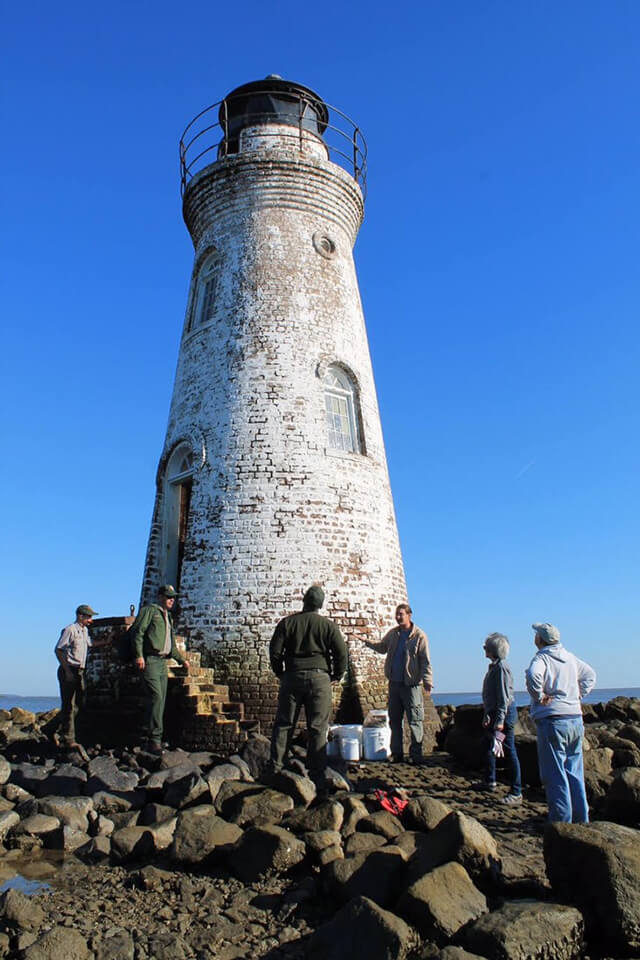
About the Friends of Cockspur Island Lighthouse
The Friends of Cockspur Lighthouse goes back for over a decade and was established to act in unison with the National Park Service (NPS). First order of business was to foster a strong bond with the NPS so the two could work in conjunction with one another. In the early days there was three names that stand out Mr. C. Harvey Ferrelle, John C. Wylly, Jr. and noted lighthouse preservationist Mr. Cullen Chambers. Mr. Chambers worked on other legendary lighthouses throughout the southeast, including the Bahamas and the larger Tybee Lighthouse.
The second step after forming this new relationship with the NPS was to establish themselves as a Not For Profit 501 3(c) group. With this major step behind them they now set about creating a list of priorities and goals to stabilize as well as provide for continued preservation. As a result of the concerted efforts by many people with the “Friends” and the NPS a Grand Re-Lighting ceremony was scheduled in 2007 and was officiated by the retired Rear Admiral David W. Kunkel. This event marked the first time the light had been on in nearly a century.
Prior to the “The Friends” forming, the NPS had been busy evaluating and addressing issues such as the wood pilings being infested with shipworms. In 1909, the dome had fallen into a sad state of being and the light was removed in order to resurrect its former glory. A study conducted by the NPS concluded that the mortar was in a failing state and needed to be addressed. However, a main concern was the erosion that was occurring on the oyster bed on which the lighthouse resides.
Gallery
We love our donors!
The Friends of Cockspur Island is a non-profit entity and relies primarily on the generous support of our donors. One hundred percent of proceeds help to preserve the Cockspur Island Lighthouse. We are so lucky to have your support!
Donating is temporarily disabled. Please check back soon.


